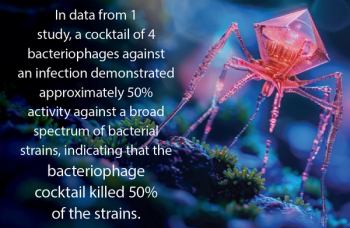
Infection Control Today
Types of Gloves
by Denise M. Korniewicz, DNSc, RN, FA
In an effort to reduce occupational exposure to Hepatitis B Virus (HBV),Human Immunodeficiency Virus (HIV), and other bloodborne pathogens, theOccupational Safety and Health Administration (OSHA) established a mandaterelated to protective attire. Specifically for gloves, it stated that"Gloves shall be worn when the employee has the potential for hands to havedirect skin contact with blood, other potentially infectious material, mucousmembranes, non-intact skin, and when handling items or surfaces soiled withblood or other potentially infectious materials. Disposable (single use) gloves,such as surgical or examination gloves, shall be replaced as soon as possiblewhen visibly soiled, torn, punctured or when their ability to function as abarrier is compromised." [Federal register: Part II, CFR Part 1910].
As a result of this mandate and the implementation of universal precautions(Centers of Disease Control and Prevention, 1987), glove usage grew from 1.4billion in 1988 to 8.3 billion in 1993 (NIOSH, 1997). Healthcare workers areconcerned, confused, and often times, unsure about the types of gloves availablefor their use in healthcare settings. Often they find that the informationavailable depends on cost versus the quality of the product.
Today, there are a variety of gloves available for medical use ranging fromsterile to non-sterile, from latex to non-latex products, and gloves marketedfor "special use" to gloves that are labeled as procedure gloves.Additionally, there are a variety of gloves color coded and used in clinicalsettings that are marketed as more effective than others; however, there islittle or no evidence as to the barrier quality of most gloves and how eachdiffers from the other. In an effort to provide information to product managersabout the selection of gloves for clinical use, most manufacturers are beginningto differentiate their product based on the standards developed by the Food andDrug Administration (FDA) and the American Standards of Tests and Materials(ASTM).
A variety of gloves can be found in most healthcare settings. These includelatex (sterile, non-sterile), neoprene (chloroprene), nitrile, vinyl,polyurethane, and a variety of copolymers. Depending on which vendors supplyyour institution, the availability and variety of gloves used in yourinstitution may vary. In order to provide healthcare workers with the bestquality of gloves used for clinical practice, gloves (surgical or non-surgical)should be evaluated for their barrier quality, strength and durability, punctureresistance, fit and comfort, elasticity, and their allergen content or abilityto cause an allergy. Listed below is a simple glove selection guide to assistproduct managers with the differences in the types of gloves available forclinical use.
Denise M. Korniewicz, DNSc, RN, FAAN, is a Professor at the University ofMaryland School of Nursing (Baltimore, Maryland).
References
- Federal Register (Part II, CFR Part 1910). Occupation Exposure to bloodborne pathogens: Proposed Rules and Notice of Hearing. May 30, 1989.
- Centers for Disease Control: Recommendations for prevention of HIV transmission in healthcare setting. Morbidity and Mortality Weekly Report. 1987;36:IS-12S,(suppl II).
- National Institute for Occupational Safety and Health, Department of Health and Human Services: NIOSH Alert: Preventing Allergic Reactions to Natural Rubber Latex in the Workplace, publ. No. 97:135, 1997.
Selection Guide for Gloves Used in Health Care Settings
Newsletter
Stay prepared and protected with Infection Control Today's newsletter, delivering essential updates, best practices, and expert insights for infection preventionists.






